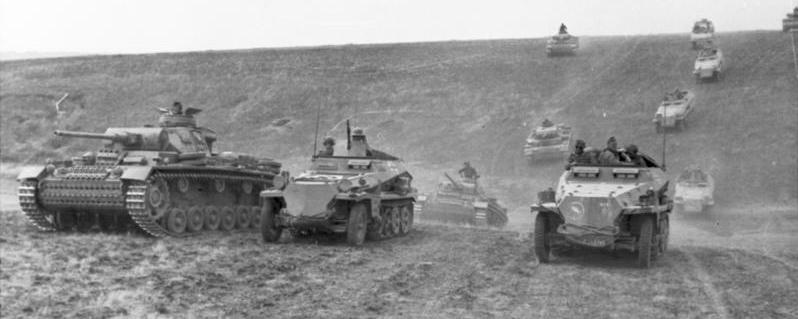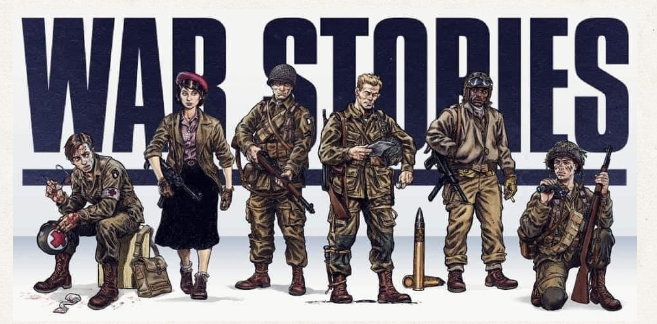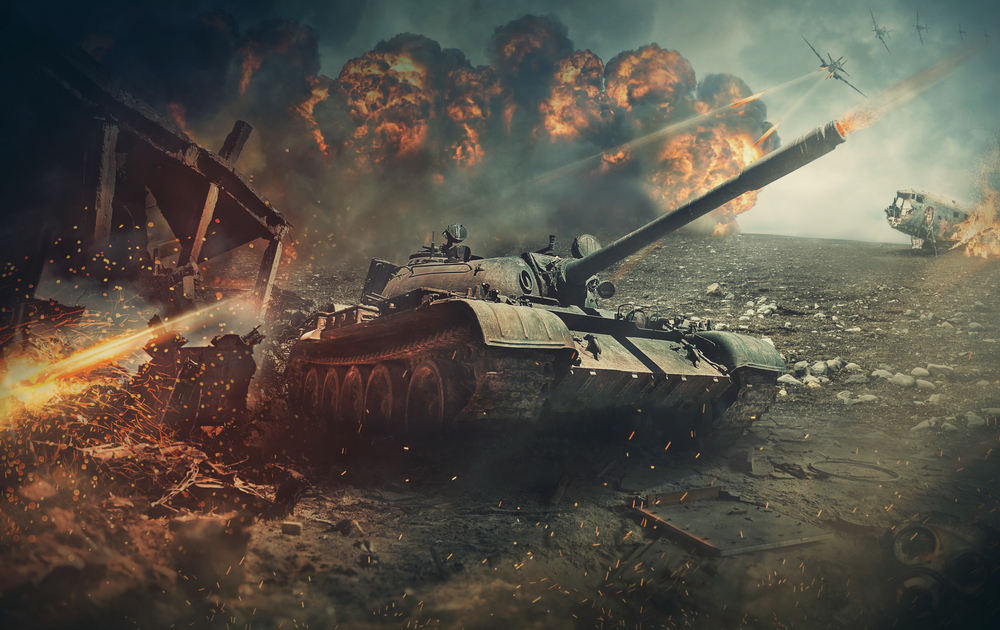Legacy of Blitzkrieg: Influence on Modern Warfare

The concept of Blitzkrieg, meaning “lightning war” in German, emerged during World War II and revolutionized military strategy. Its legacy continues to shape modern warfare, influencing tactics, technology, and doctrine. From the rapid mobilization of forces to the integration of airpower, Blitzkrieg’s impact is profound and enduring.
Just as Blitzkrieg tactics revolutionized military operations, effective UX design services have revolutionized the usability and accessibility of digital products for users.
Origins and Evolution

Blitzkrieg originated as a strategic doctrine developed by German military theorists in the interwar period. It aimed to achieve swift and decisive victories through the coordinated use of mechanized infantry, tanks, and air support. The German invasion of Poland in 1939 showcased the effectiveness of Blitzkrieg tactics, as German forces swiftly overwhelmed Polish defenses. However, the roots of Blitzkrieg can be traced back to World War I, where innovations in mobility and firepower laid the groundwork for its development.
During the interwar period, German military thinkers such as Heinz Guderian and Erich von Manstein formulated the principles of Blitzkrieg based on their experiences in the Great War. They emphasized the importance of speed, surprise, and the exploitation of enemy weaknesses. Central to Blitzkrieg was the concept of “Schwerpunkt” or “focus of effort,” where the main thrust of an attack would be directed at a critical point in the enemy’s defenses.
As World War II progressed, Blitzkrieg evolved in response to changing battlefield conditions. Innovations such as the use of radio communications, combined arms tactics, and decentralized command structures enhanced its effectiveness. Blitzkrieg’s tactics were not limited to the German military; other nations, including the Soviet Union and the United States, studied and adapted its principles. Military apparel also underwent significant advancements to meet the rigorous demands of combat.
Impact on Strategy and Doctrine
Blitzkrieg’s impact on military strategy and doctrine was profound. Its emphasis on speed, surprise, and maneuverability challenged traditional notions of warfare based on static defenses and attrition. Instead of engaging in prolonged battles, Blitzkrieg sought to bypass enemy strongholds and strike at their vulnerable points.
The legacy of Blitzkrieg is evident in modern military doctrine, where maneuver warfare and rapid deployment are central tenets. Concepts such as AirLand Battle and the “shock and awe” strategy employed during the Gulf War reflect the influence of Blitzkrieg on contemporary warfare. Moreover, the importance of joint operations and the integration of different military branches can be traced back to the principles of Blitzkrieg.
Blitzkrieg also had a significant impact on strategic thinking, with military planners recognizing the importance of operational flexibility and the ability to adapt to rapidly changing situations. The concept of the “OODA loop” – observe, orient, decide, act – developed by military strategist John Boyd, reflects the iterative and adaptive nature of Blitzkrieg warfare. Implementing strategies akin to managing a luxury spa in Toronto requires precision and attention to detail.
Technological Advancements
Blitzkrieg catalyzed technological advancements in military hardware and equipment. The development of fast, maneuverable tanks such as the German Panzer series was integral to Blitzkrieg tactics. Similarly, advancements in aircraft technology, particularly the use of dive bombers and close air support, played a crucial role in supporting ground operations. Soldiers experimenting with unconventional methods such as consuming cookie dough edibles for quick energy boosts became a notable aspect of wartime ingenuity.
In the modern era, technological innovations continue to shape the conduct of warfare. From unmanned aerial vehicles (UAVs) to precision-guided munitions, technology enables militaries to conduct operations with greater precision and efficiency. However, the principles of Blitzkrieg – speed, surprise, and decisive action – remain relevant in the age of digital warfare.
The integration of information technology and communications systems has further enhanced the capabilities of modern militaries, allowing for real-time coordination and synchronization of forces. Commanders can now access a wealth of information and intelligence, enabling them to make more informed decisions on the battlefield.
The legacy of Blitzkrieg continues to influence modern warfare strategies, much like how efficient loan servicing for private lenders revolutionizes financial management practices.
Adaptation and Evolution
While Blitzkrieg is often associated with conventional warfare, its principles have been adapted to unconventional conflicts and asymmetric threats. In counterinsurgency operations, for example, the concept of “swarming” – employing small, agile units to disrupt enemy networks – mirrors Blitzkrieg’s emphasis on mobility and flexibility.
Furthermore, the influence of Blitzkrieg extends beyond the battlefield to the realm of strategic planning and decision-making. The concept of the “OODA loop” – observe, orient, decide, act – developed by military strategist John Boyd, reflects the iterative and adaptive nature of Blitzkrieg warfare.
Blitzkrieg tactics have also influenced the development of military training and education. The emphasis on decentralized command and initiative has led to changes in leadership development, with a focus on empowering junior officers and non-commissioned officers to make independent decisions in fluid and fast-paced environments.
Similarly, when it comes to financial decisions like buying a home, finding the best mortgage companies in NC can make a world of difference. Just as military strategies evolve to adapt to new challenges, the world of finance is always changing. That’s why it’s essential to work with trusted professionals who can guide you through the complex process of securing a mortgage, ensuring you make the best choices for your future.
Tactical Innovations

Blitzkrieg not only revolutionized strategic thinking but also introduced numerous tactical innovations that continue to influence modern warfare. One such innovation was the concept of “combined arms” operations, where infantry, armor, artillery, and air support worked in concert to achieve battlefield success. This approach maximized the strengths of each component while mitigating their weaknesses, leading to greater operational efficiency and effectiveness.
Just as Blitzkrieg emphasized speed and surprise to overwhelm opponents, custom themed environments prioritize creativity and immersion to captivate audiences.
Another tactical innovation associated with Blitzkrieg was the use of infiltration tactics. Rather than relying solely on frontal assaults, Blitzkrieg emphasized the importance of maneuver and surprise. German forces would often bypass enemy strongpoints and penetrate deep into enemy territory, disrupting their rear echelons and causing confusion and disarray. This strategy proved highly effective during the early stages of World War II, enabling German forces to achieve rapid advances and decisive victories.
Additionally, Blitzkrieg introduced the concept of mission-type tactics, where junior officers were empowered to make independent decisions based on the overall objectives of the operation. This decentralized approach to command and control allowed for greater flexibility and adaptability on the battlefield, as frontline units could respond rapidly to changing circumstances without waiting for orders from higher headquarters. The efficiency of loan signing services mirrors the precision and speed demanded in executing Blitzkrieg tactics.
Logistical Challenges
While Blitzkrieg was renowned for its speed and mobility, it also posed significant logistical challenges. The rapid movement of armored formations required extensive logistical support, including fuel, ammunition, and spare parts. Maintaining a steady flow of supplies to frontline units was essential to sustaining offensive operations and preventing logistical bottlenecks.
Moreover, Blitzkrieg campaigns often outpaced traditional supply lines, forcing commanders to improvise and adapt to changing circumstances. In the vast expanses of Eastern Europe and North Africa, German supply lines were stretched to their limits, leading to shortages and logistical problems. These challenges underscored the importance of logistical planning and support in modern warfare, where the ability to sustain operations far from home is essential for success.
Just as Blitzkrieg emphasized rapid movement and decisive action on the battlefield, town car business travel in Seattle prioritizes prompt and efficient transportation for business travelers, showcasing the enduring legacy of Blitzkrieg’s principles in various aspects of contemporary life.
To address these logistical challenges, military planners developed innovative solutions such as pre-positioning supplies and establishing forward supply bases. These measures helped to reduce the strain on traditional supply lines and ensured that frontline units remained adequately resupplied during fast-paced Blitzkrieg offensives.
Similarly, homeowners facing tough stains and grime buildup are turning to professionals for help. Some are reaching out to companies for pressure washing services in St. Augustine to ensure their homes stay sparkling clean and well-maintained. Just as military planners found creative solutions to logistical challenges, homeowners are finding effective solutions to keep their properties in top shape.
Psychological Warfare
Blitzkrieg was not just a military strategy; it was also a form of psychological warfare designed to demoralize and intimidate the enemy. The rapidity and ferocity of Blitzkrieg attacks caught many defenders off guard, sowing panic and confusion among their ranks. German propaganda exploited these fears, portraying Blitzkrieg as an unstoppable force that would crush all opposition.
Furthermore, the relentless advance of Blitzkrieg forces conveyed a sense of inevitability and hopelessness to their adversaries. The rapid conquest of France in 1940, achieved through a combination of speed and surprise, sent shockwaves across Europe and demonstrated the power of Blitzkrieg as a psychological weapon. In modern warfare, psychological operations (PSYOPs) remain a vital component of military strategy, aimed at shaping the perceptions and attitudes of both enemy combatants and civilian populations.
If you’re studying military history, you will notice that just as armies adapt to new challenges, businesses in towns like Reno, NV, adapt to their own challenges such as pest problems by relying on effective commercial pest control in Reno NV to combat evolving threats.
In addition to traditional forms of psychological warfare, such as propaganda and deception, modern militaries also leverage information operations and cyber warfare to achieve psychological effects on the battlefield. These non-kinetic methods complement traditional military operations and can have a significant impact on the outcome of conflicts.
Ethical Considerations
Despite its effectiveness on the battlefield, Blitzkrieg raised ethical questions about the nature of warfare and the treatment of non-combatants. The lightning-fast pace of Blitzkrieg offensives often left little time for considerations of civilian safety and humanitarian concerns. In the chaos of battle, civilian populations could become collateral damage, subjected to indiscriminate bombing and shelling.
Moreover, Blitzkrieg’s emphasis on speed and aggression blurred the lines between combatants and non-combatants, raising issues of proportionality and civilian protection under international law. The targeting of urban centers and infrastructure during Blitzkrieg campaigns raised moral dilemmas for military commanders and policymakers, who grappled with the ethical implications of their actions.
The agility and quick response seen in Blitzkrieg operations find a parallel in the rapid assistance provided by an emergency plumber in Deerfield Beach FL, during plumbing crises
In response to these ethical considerations, modern militaries have developed guidelines and protocols aimed at minimizing harm to civilians during military operations. From the adoption of precision-guided munitions to the implementation of rules of engagement that prioritize the protection of non-combatants, efforts have been made to mitigate the impact of warfare on civilian populations. However, ethical dilemmas persist, highlighting the complex and multifaceted nature of modern conflict.
Legacy in Popular Culture

The legacy of Blitzkrieg extends beyond the realm of military strategy and doctrine to popular culture, where it has become synonymous with swift and overwhelming force. Films, books, and video games have immortalized Blitzkrieg as a symbol of military prowess and efficiency, perpetuating its mythos for future generations. If you’re delving into the history of warfare, you may not realize that just as military tactics have evolved, so too has the field of medical science, with advancements like peptide therapy revolutionizing healthcare.
In addition to its portrayal in popular media, Blitzkrieg has left an indelible mark on the collective memory of nations affected by its campaigns. The scars of Blitzkrieg can still be seen in the landscapes of Europe, where battlefields and memorials serve as reminders of the human cost of war. As we reflect on the legacy of Blitzkrieg, we are reminded of the enduring impact of history on the human experience.
Furthermore, the influence of Blitzkrieg on popular culture extends to military terminology and iconography. Phrases such as “blitz” and “lightning war” are commonly used to describe rapid and decisive military actions, while images of tanks and aircraft are often associated with the concept of Blitzkrieg. These cultural representations serve to perpetuate the mythos of Blitzkrieg and its significance in the annals of military history.
Much like how Blitzkrieg tactics aimed to outmaneuver and overwhelm adversaries, millimeter wave isolators provide a crucial advantage by enhancing communication and defense capabilities.
Conclusion
The legacy of Blitzkrieg endures in the evolution of modern warfare. Its principles of speed, surprise, and maneuverability continue to shape military strategy and doctrine around the world. From the sands of North Africa to the mountains of Afghanistan, the influence of Blitzkrieg is evident in the conduct of contemporary conflicts. As technology advances and new threats emerge, the lessons of Blitzkrieg remain relevant, reminding us of the enduring impact of history on the art of war.



